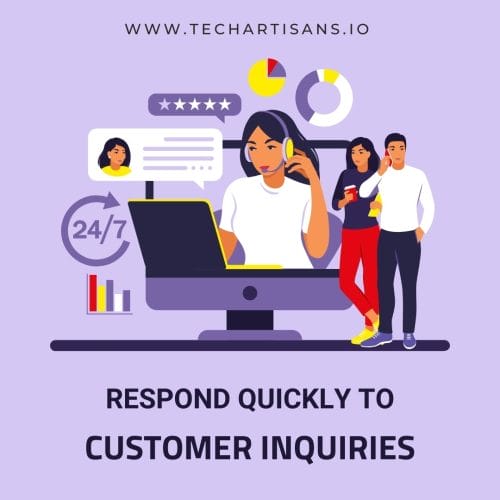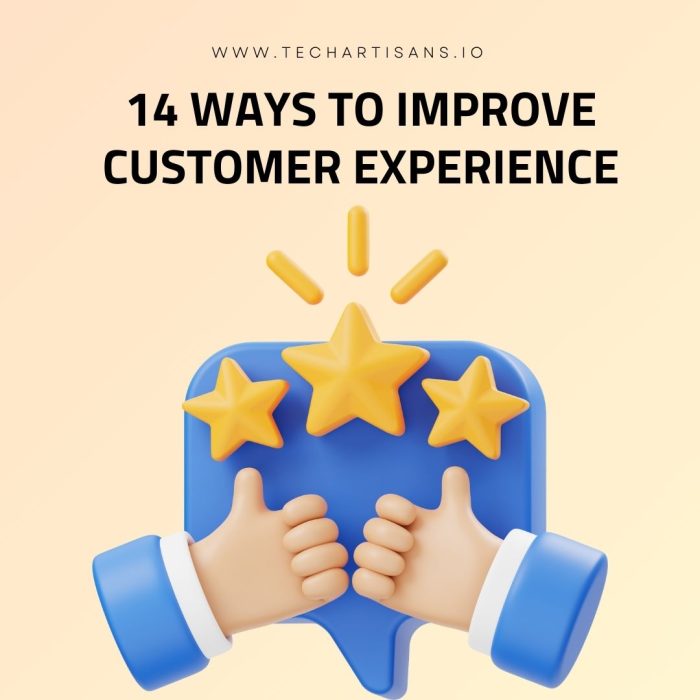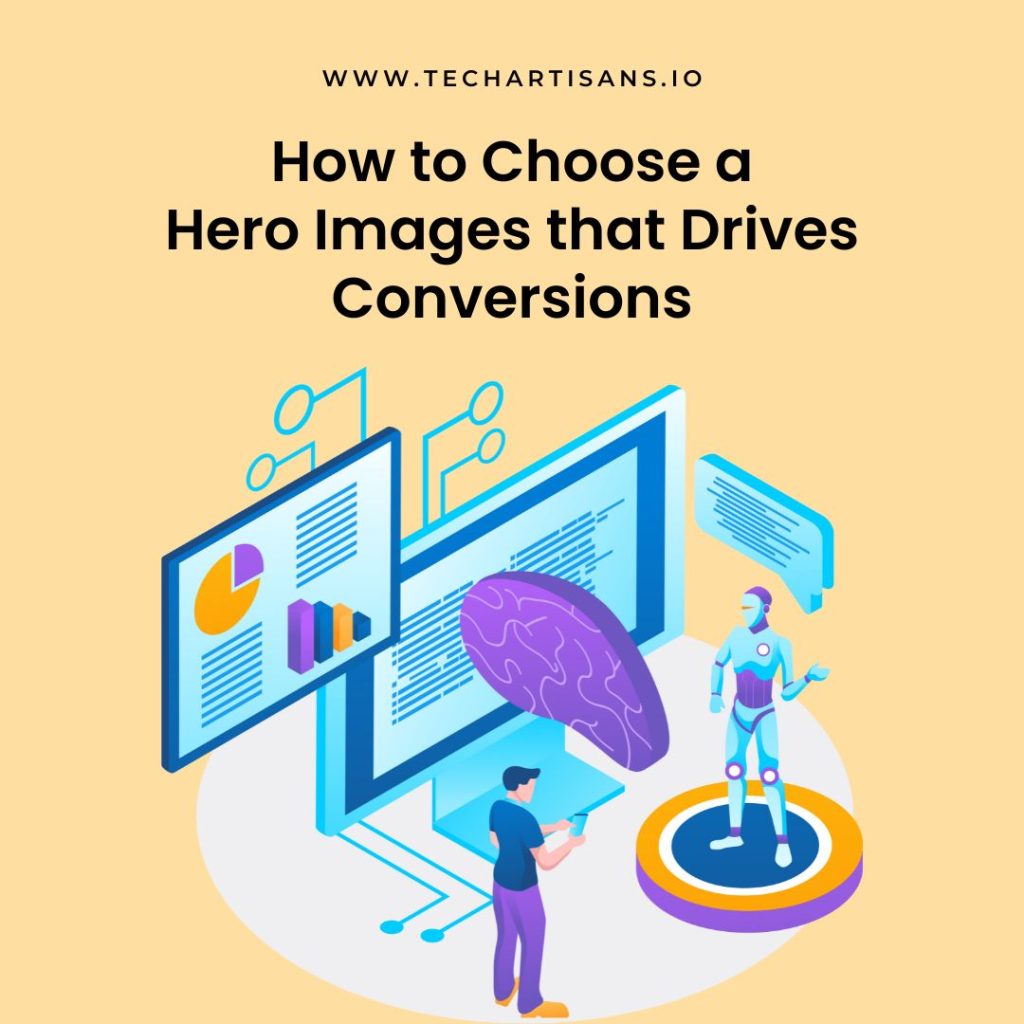In today’s digital age, businesses must have a strong online presence to be successful. One of the key factors that can determine the success of an online business is the customer experience on its website. A positive customer experience can lead to increased customer satisfaction and engagement, ultimately driving sales and revenue for the business to improve customer loyalty.
In this article, we will explore 14 ways to improve customer experience on your website with proven techniques that businesses have used successfully.
1. User-Friendly and Easy to Navigate Website

Making your website user-friendly, customer-focused, and easy to navigate is one of the most important factors in improving the customer experience.
Some key elements to consider when designing a user-friendly website include the following:
- Consistency in Layout and Design: A consistent layout and design, with clear and intuitive navigation, make it easy for visitors to find what they want.
- Use of White Space: Adequate white space around text and images makes your website more visually appealing and easier to read.
- Intuitive Navigation: Navigation should be simple and intuitive, with links and categories clearly labeled and easily understood.
- Use of High-Contrast Colors: High contrast between the background and text color makes it easy for visitors to read and understand the content.
- Clear Calls to Action: Clear calls to action guide visitors toward the next step, such as purchasing a product or signing up for a service.
- Test with Users: Conduct user testing and gather feedback to improve customer experience by implementing customer feedback.
2. Mobile-Friendly and Responsive Website

Ensuring your website is mobile-friendly and responsive is crucial for providing a good customer experience. A mobile-friendly website is easily accessible and usable on mobile devices like smartphones and tablets.
A responsive website, on the other hand, adapts its layout and design to the size of the screen it is being viewed on, whether it’s a desktop, laptop, tablet, or smartphone.
Here are some key things to consider when making your website mobile-friendly and responsive:
- Use a Flexible Grid Layout: A flexible grid layout allows your website to adjust its layout and design to the screen size it’s being viewed on.
- Optimize Images and Videos: Optimize images and videos for mobile devices so that they load quickly and don’t use too much data.
- Clickable Links: Ensure all links and buttons on your website are easily clickable, even on a small touch screen.
- Mobile-Specific Design: Consider using a mobile-specific design tailored for smaller screens and touch-based interactions.
- Test on Different Devices: Test your website on different mobile devices to ensure it looks and functions as intended.
- Accelerated Mobile Pages (AMP): Use technology like AMP to load faster on mobile devices.
3. Quick Loading Website

Website loading speed is a critical factor in the entire customer journey, as visitors will likely leave a website that takes too long.
Here are some key things you can do to optimize your website’s loading speed:
- Content Delivery Network (CDN): A CDN is a network of servers distributed worldwide, allowing your website’s content to be delivered to visitors from the closest server to their location, resulting in faster loading times.
- Optimize Images: Large or high-resolution photos can slow down your website, so make sure to compress or optimize images before uploading them to your website.
- Minimize HTTP Requests: When a browser requests a file, such as an image or a script, it can slow the loading process. Minimizing the number of HTTP requests your website makes can improve loading speed.
- Use Gzip Compression: Gzip compression can reduce the size of the files sent from your server to the visitor’s browser, resulting in faster loading times.
- Use Browser Caching: Browser caching allows your website’s static files (such as images, CSS, and JavaScript files) to be stored on the visitor’s computer so that they don’t need to be downloaded again on subsequent visits, resulting in faster loading times.
- Remove Unnecessary Plug-ins and Add-ons: Remove unnecessary plug-ins, widgets, and add-ons that could slow down your website.
- Monitor and Track Website Performance: Regularly monitoring and tracking your website’s performance using tools such as Google Analytics, WebPageTest, or GTmetrix, which show customer experience metrics, can help you identify and resolve any issues slowing down your website.
4. Use Clear and High-Quality Images and Videos
Using clear and high-quality images and videos on your website can greatly enhance the customer journey. Here are some key things to consider when using photos and videos on your website:
- Use High-Quality Images: Using high-quality images that are well-lit, in focus, and of appropriate resolution can greatly improve the visual appeal of your website.
- Optimize Images for the Web: Optimize your images for the web by compressing them to reduce their file size without compromising quality.
- Use Relevant Images: Use images that are relevant to your website’s content and that help to enhance the user experience.
- Use Alt Tags for Images: Use alt tags to describe images and make them accessible for visually impaired users and search engines.
- Use Videos to Showcase Products or Services: Videos can be a great way to showcase products or services by providing a detailed visual representation of your offering.
- Provide Subtitles or Captions: If you use videos, add subtitles or captions to make them accessible for those with impaired hearing or in a noisy environment.
5. Use Straightforward Language
Using simple language on your website can greatly enhance the customer journey by making it easy for visitors to understand your content and take the desired actions.
Here are some key things to consider when using language on your website:
- Simple, Easy-to-Understand Language: Avoid industry-specific jargon or complex vocabulary that might be difficult for visitors to understand.
- Be Consistent in Your Language: Use a consistent tone and style throughout your website to help create a clear and coherent brand voice.
- Action-Oriented Language: Use action-oriented language to encourage visitors to take the desired actions, such as “buy now” or “sign up.”
- Clear and Concise Headlines: Use clear and concise headlines that accurately reflect the content on the page and are easy for visitors to understand at a glance.
- Use Bullet Points or Numbered Lists: Use bullet points or numbered lists to break up blocks of text and make it easier for visitors to read and understand the content.
- Use Clear Error Messages: Use clear error messages when necessary to guide the user, rather than using technical jargon, which can be hard to understand.
6. Search Features
Making it easy for customers to find what they are looking for is an important aspect of improving the customer experience on your website.
For more, read How to Create User Flow
Here are some key things to consider when making your website easy to navigate:
- Clear and Intuitive Navigation Menu: It organizes your website’s content into categories and subcategories, making it easy for visitors to find what they want.
- Search Function: Include a function on your website that lets visitors quickly find what they’re looking for by typing keywords into a search bar.
- Breadcrumb Navigation: Use breadcrumb navigation to show visitors their current website location and provide links to previous pages.
- Clear and Descriptive Link Text: It makes it easy for visitors to understand where a link will take them before clicking it.
- Use Visual Cues: Visual cues such as icons or images help visitors quickly identify where they need to go and understand the content of a page.
- Easy Access to Frequently Searched Content: On the homepage or landing page, provide easy access to frequently searched content or categories to ensure visitors can quickly find what they are looking for.
- Use the Predictive Search: Use the predictive search functionality to suggest relevant content or products as soon as the user starts typing.
7. Clear and Accurate Product or Service Information

Providing clear and accurate product or service information is an important aspect of improving the customer experience on your website.
Here are some key things to consider when giving product or service information:
- Detailed and Accurate Product Descriptions: Use clear and precise product descriptions that clearly describe your products’ features, benefits, and specifications.
- High-Quality Images: Use high-quality images that accurately represent your products or services and what customers expect.
- Product Reviews and Ratings: Include product reviews and ratings on your website so visitors can see what other customers say about your products or services.
- Video Demonstrations: Use video demonstrations to provide a more detailed and interactive representation of your products or services.
- Provide Size and Color Options: If available, provide size and color options for products, to help visitors find the right fit or color they want.
- Pricing and Availability Information: Include pricing and availability information for products or services so that visitors can see at a glance whether or not a product is in stock or if the service is available for booking.
- Comparison Feature: This feature allows visitors to compare different products or services based on their features, benefits, and specifications.
- FAQ Section: Use a FAQ section to answer common questions about your products or services and help visitors find the information they need more quickly.
8. Multiple Contact Options

Offering multiple contact options is an important aspect of improving the customer experience and meeting customer expectations on your website. By providing a variety of ways for customers to get in touch with your company, you can ensure that they can reach out for assistance in a way that is most convenient for them.
Discover the importance of this in Connect with Customers Through Your Website
Here are some key things to consider when providing multiple contact options:
- Phone Number and Email Address: Make sure to provide a phone number and email address on your website so that customers can speak to a customer service representative.
- It is useful for people who prefer to discuss their issues and can lead to quicker and more efficient problem-solving.
- Live Chat Support: Incorporate live chat support to quickly respond to customer inquiries in real-time. Live chat is a convenient way for customers to get assistance, as it allows them to receive help without having to call or email.
- Contact Form: Include a contact form on your website that allows customers to send a message to your customer service team and to have their basic customer details. It can be useful for customers who have detailed or complex issues to explain in writing.
- Social Media Links: Provide links to your social media accounts so customers can contact you through those channels. It can be useful for customers who are already active on social media and prefer to use those channels for communication.
9. Respond Quickly to Customer Inquiries

Using live chat to respond quickly to customer inquiries is an effective way to improve the customer experience on your website.
For more on enhancing customer interaction, read Digital Marketing Tools
Live chat allows visitors to interact with customer service representatives in real-time and can provide a quick and convenient way for visitors to get the information they need and know customer expectations.
Here are some key things to consider when using live chat on your website:
- Customer Service Representatives: Make sure to have great customer service representatives available during business hours to respond to customer inquiries in real-time.
- Proactive Chat Invitations: Use proactive chat invitations to offer live chat assistance to visitors when they land on your website.
- Chatbot: Use a chatbot to respond to customer inquiries 24/7 and provide assistance even when customer service representatives are unavailable.
- Transcript of the Conversation: Provide a transcript to the customer after the chat session so that they can refer to it later.
- Customer Management System: Use a customer management system that records customer interactions and information, to personalize outstanding customer service and improve customer experience.
10. Customer Reviews and Ratings

Incorporating customer reviews and ratings on your website effectively improves the customer experience by providing visitors with valuable information about your products and services.
Here are some key things to consider when incorporating customer reviews and ratings on your website:
- Review Platform: Use a review platform, like Yelp or Trustpilot, to collect and display customer reviews on your website. It can help increase trust and credibility, as the reviews will come from an independent source.
- Snippets: Use rich snippets to display customer reviews and ratings directly in search results. This can increase visibility and click-through rates for your website in search results.
- Reviews on Product Pages: Include reviews on product pages so that customers can see what others say about the product before purchasing.
- Respond to Reviews: Respond to positive and negative reviews to show that you value customer feedback and are actively working to improve.
- Reviews as Feedback: Use customer reviews to get feedback on your products and services and identify improvement areas and implement customer feedback.
- Reviews to Build Social Proof: Use customer reviews and ratings to show that other customers have had positive experiences with your brand, which can increase trust and credibility with potential customers.
11. FAQ Section
Creating a FAQ (Frequently Asked Questions) section on your website improves the customer experience by providing quick and easy access to answers to common customer questions.
Here are some key things to consider when creating a FAQ section:
- Identify Common Questions: Identify customers’ most common questions about your products or services, and use that information to create your FAQ section.
- Use Clear and Simple Language: Use clear and simple language to make the FAQ section easy to understand for all visitors.
- Easily Accessible: Make the FAQ section easily accessible from the homepage or navigation menu so that customers can find it quickly.
- Keep the FAQ Section Up to Date: Keep the FAQ section up to date by regularly reviewing and updating the information to ensure that it remains accurate and relevant.
- Links: Use links within the FAQ to related information or pages on the website that could provide more information or guidance.
12. Personalized Recommendations and Offers

Creating personalized recommendations and offers for customers is an effective way to improve the customer experience by providing tailored and relevant information and offers to each customer.
Here are some key things to consider when creating personalized recommendations and offers:
- Machine Learning and AI: Use machine learning and AI algorithms to analyze customer data such as browsing history, purchase history, and preferences, and create personalized recommendations and offers.
- Personalize Emails and Marketing Campaigns: Personalize emails and marketing campaigns based on customer data, such as product recommendations, special offers, and personalized content.
- Personalized Product Recommendations: Provide personalized product recommendations on your website and through email marketing based on customers’ browsing and purchase history.
- Discounts and Deals: Offer personalized discounts and deals to customers based on their purchase history or browsing behavior.
- Landing Pages: Create personalized landing pages for customers based on their browsing and purchase history.
- Push Notifications: Use personalized push notifications to promote personalized deals or products to customers.
- Monitor and Analyze Results: Monitor and analyze results to ensure that the personalized recommendations and offers are effective and optimized based on customer engagement.
13. Social Proof
Displaying the number of satisfied customers improves the customer experience by building trust and credibility with potential customers. Social proof is the idea that people are more likely to purchase or take action if they see that others have already done so.
Here are some key things to consider when using social proof on your website:
- Display the Number of Happy Customers: Display the number of purchases, reviews, or testimonials, on your website.
- Customer Testimonials: Written reviews or video testimonials provide a personal touch and build trust with potential customers.
- Showcase Customer Logos: Showcase customer logos of well-known companies who have used your product/service to build trust and social proof.
- Social Media Testimonials: Use social media testimonials, such as tweets or Facebook posts, as social proof on your website.
- Badges and Trust Badges: They indicate that your website or business has been endorsed or certified by a reputable organization.
- Data Visualization: Data visualization shows the popularity of your product, for example, by creating heat maps that show where your product is most popular.
14. Hassle-Free Returns or Refund Process

Offering a simple and hassle-free returns or refund process is an important aspect of improving the customer experience on your website. A clear and easy-to-understand returns and refund policy can help increase customer confidence in purchasing and make them more likely to return to your website.
Here are some key things to consider when creating a returns or refund process:
- Clearly State the Returns or Refund Policy: This can include information on how to initiate a return, the conditions under which returns or refunds will be accepted, and the time frame for processing refunds.
- Hassle-Free Return Process: Provide a hassle-free return process by allowing customers to initiate a return online, by email, or by phone, provide clear instructions for returning an item, and provide pre-paid shipping labels when necessary.
- Process Clear and Easy: Make the process clear and easy by providing step-by-step instructions on returning an item, including any required documentation.
- Communicate Throughout the Process: Communicate by sending confirmation of receipt of returned items and notification of refund processing.
- Process Refunds Promptly: Process refunds usually within 7-10 business days of receiving the returned item, which can increase customer satisfaction scores.
- Allow Exchange Options: Give exchange options to customers if they want to replace the returned item with a different product or size.
Conclusion
In conclusion, improving your website’s customer journey is crucial for customer-centric companies.
There are many ways to achieve this, including creating a user-friendly website design, providing easy navigation, offering multiple contact options, incorporating customer reviews and ratings, creating a FAQ section, and more.
By implementing these proven techniques and customer loyalty programs, businesses can improve the customer experience on their website, leading to increased sales and revenue.







